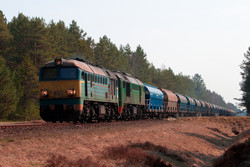Reducing emissions from rail transportation
In 2008, the Environmental Protection Agency (EPA) adopted standards that should dramatically reduce nitrogen oxide (NOx) and PM emissions from locomotives. The standards are based on the application of high-efficiency catalytic after-treatment technology for freshly manufactured engines built in 2015 and later. Although selective catalytic reduction is a well-established after-treatment technology, it cannot effectively convert nitric oxide (NO) at ambient temperature and at low concentrations. The EU-funded project ENSPIRIT(opens in new window) (Elimination of NOx, SOx and particulates in rail transportation) is working on an advanced oxidative catalytic device that enables NO to be converted into nitrogen dioxide at ambient temperature, without using ammonia. ENSPIRIT will also create an in situ microwave irradiation apparatus to optimise desorption of contaminants from carbon catalysts. The system is based on use of activated carbon (AC) given that it is an excellent microwave absorbent. Ultimately, the catalytic device will be integrated into a system of combined devices for removing heat, moisture, sulphur oxides, ultrafine PM and NOx. This should provide a complete, cost-effective and energy-efficient way of meeting EPA's new Tier 4 emission rules for new and older diesel trains beginning in 2015. So far, the project team has performed significant work with regard to the design of a low-temperature catalytic oxidation reactor. A preliminary investigation of low-temperature NO oxidation with AC at different reactor conditions (temperature, flow rates, catalyst quantity) was carried out. Regarding the microwave catalytic reactor, the team has successfully prepared the catalyst materials and developed a method for identifying changes in the AC surface area. Manufacture of the regeneration system components has started. NOx and PM from diesel locomotives negatively impact on human health and the environment. The project's innovative emission abatement system will reduce NOx emissions by 75 % from diesel locomotives of all types – line-haul, switch and passenger rail.




